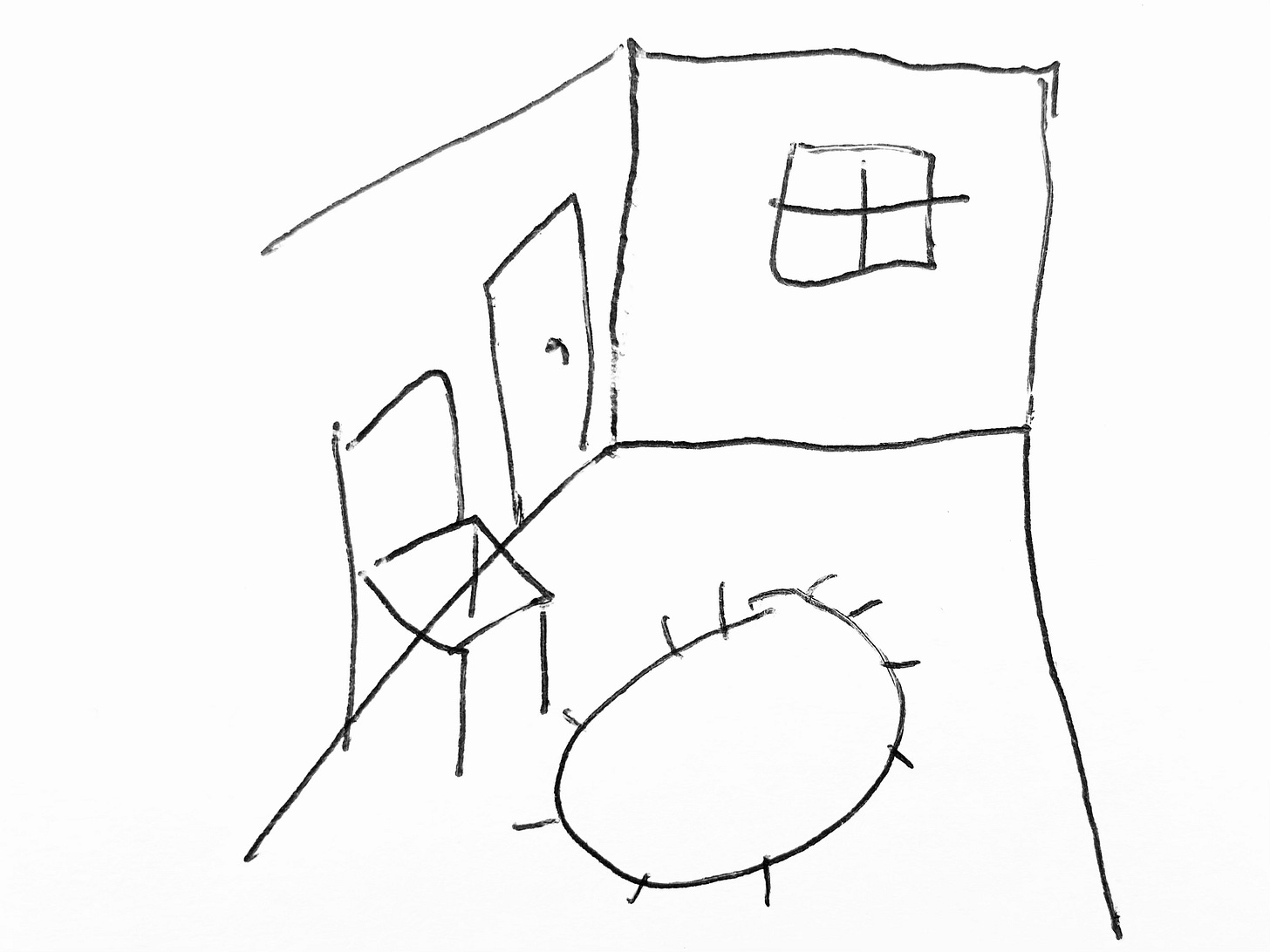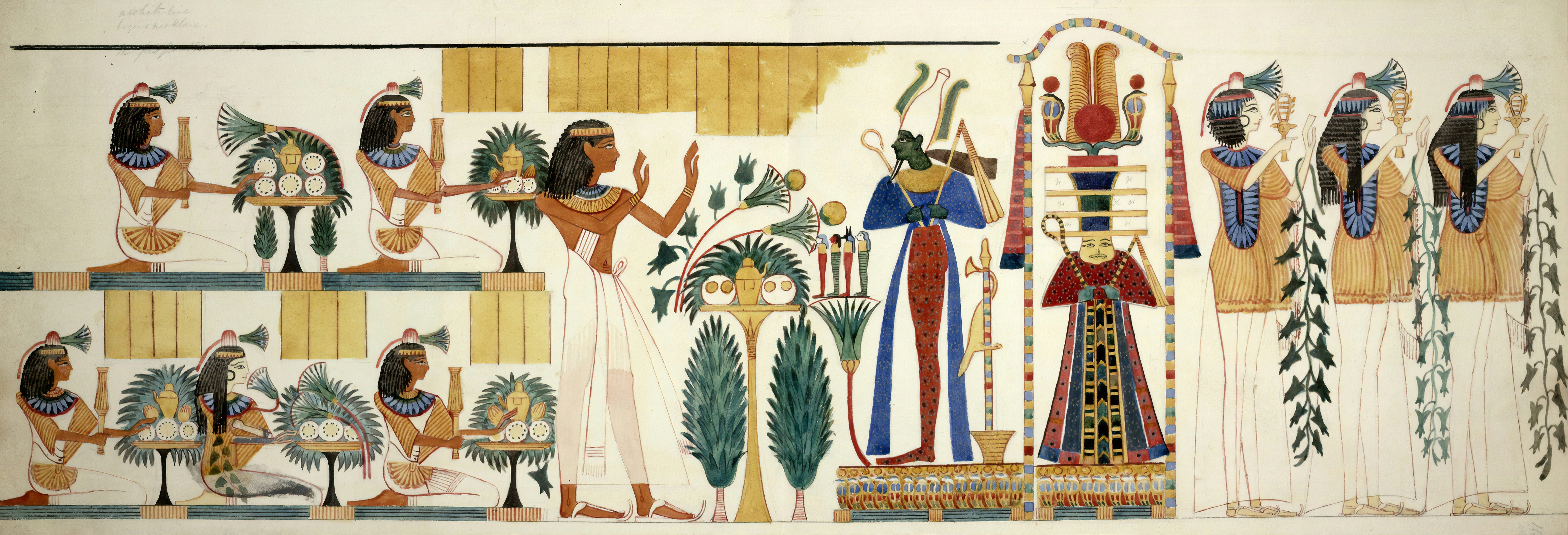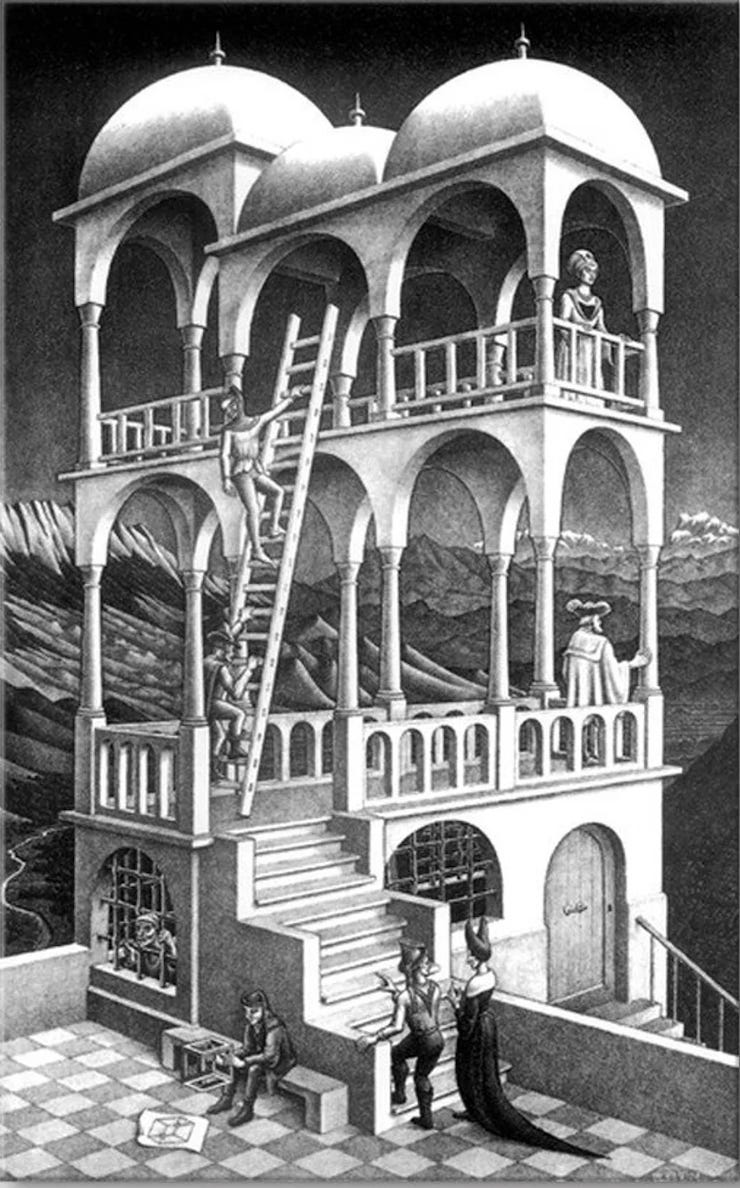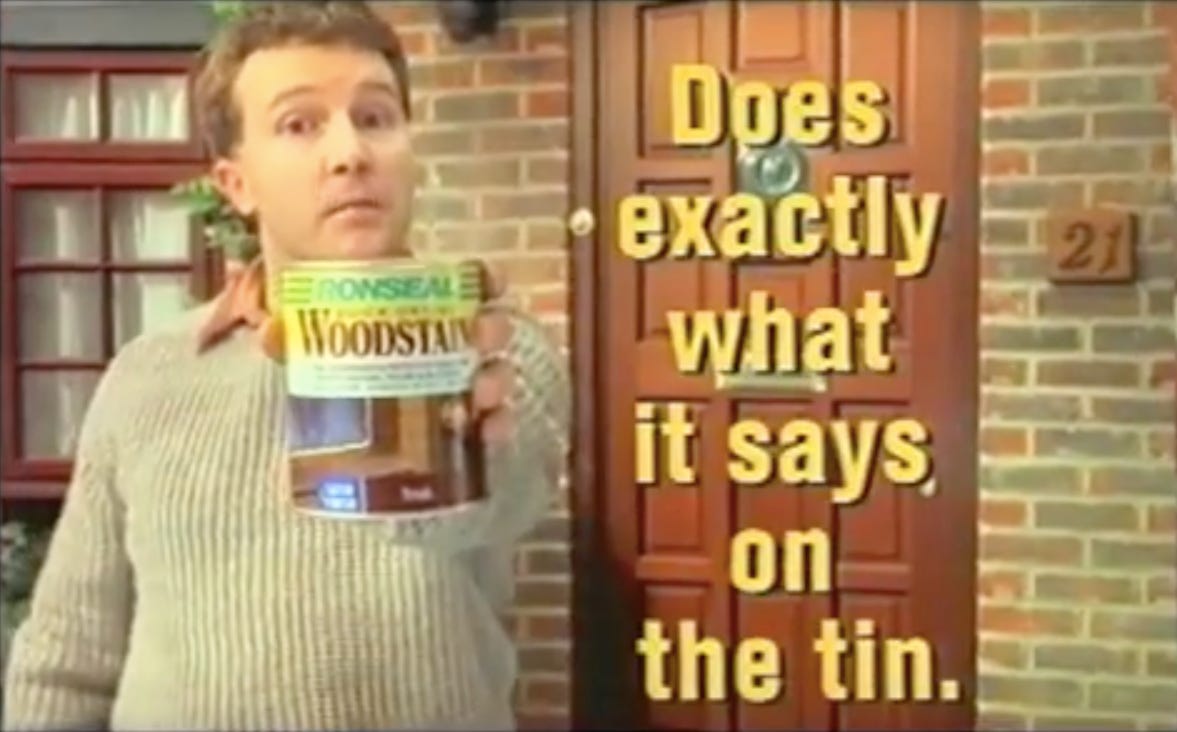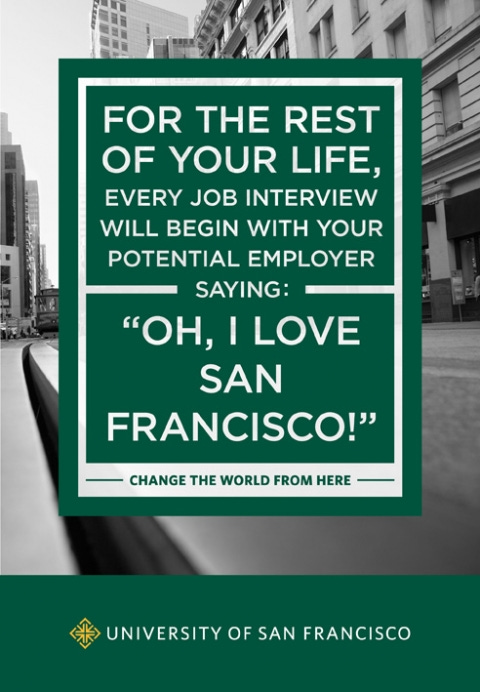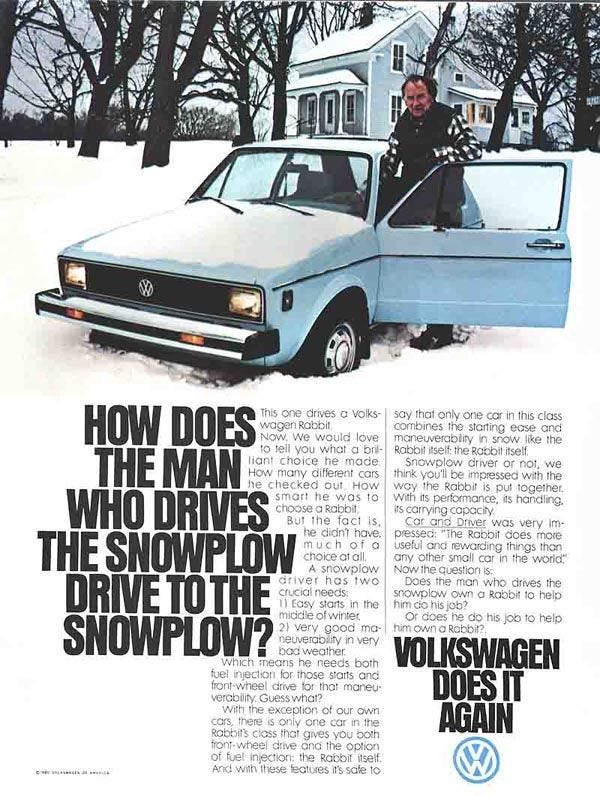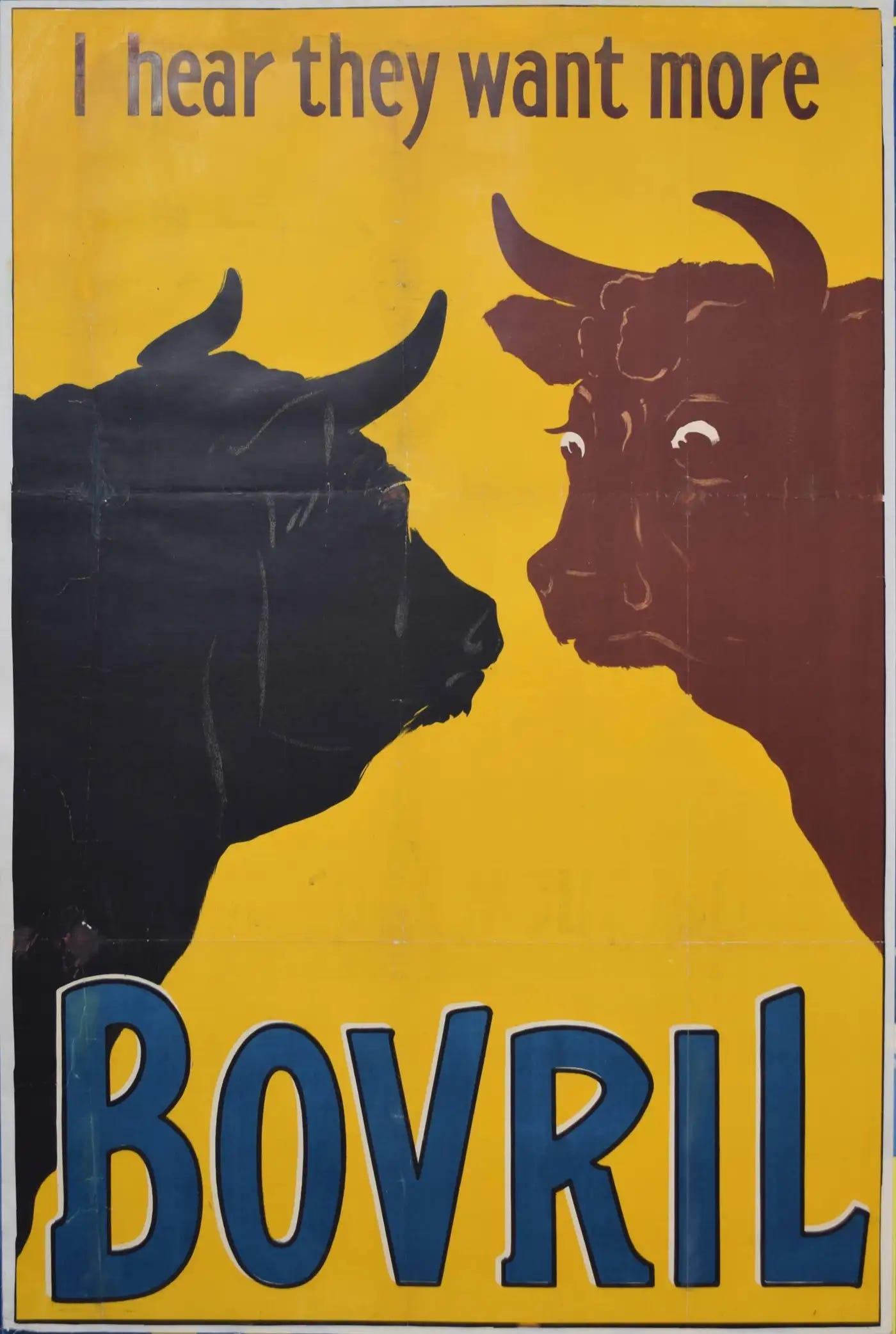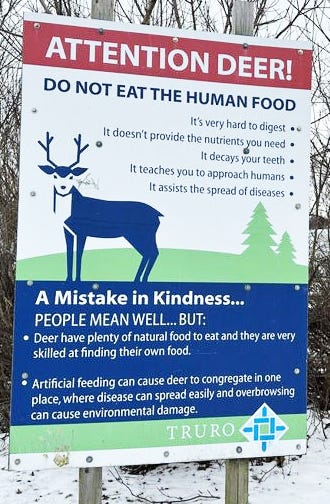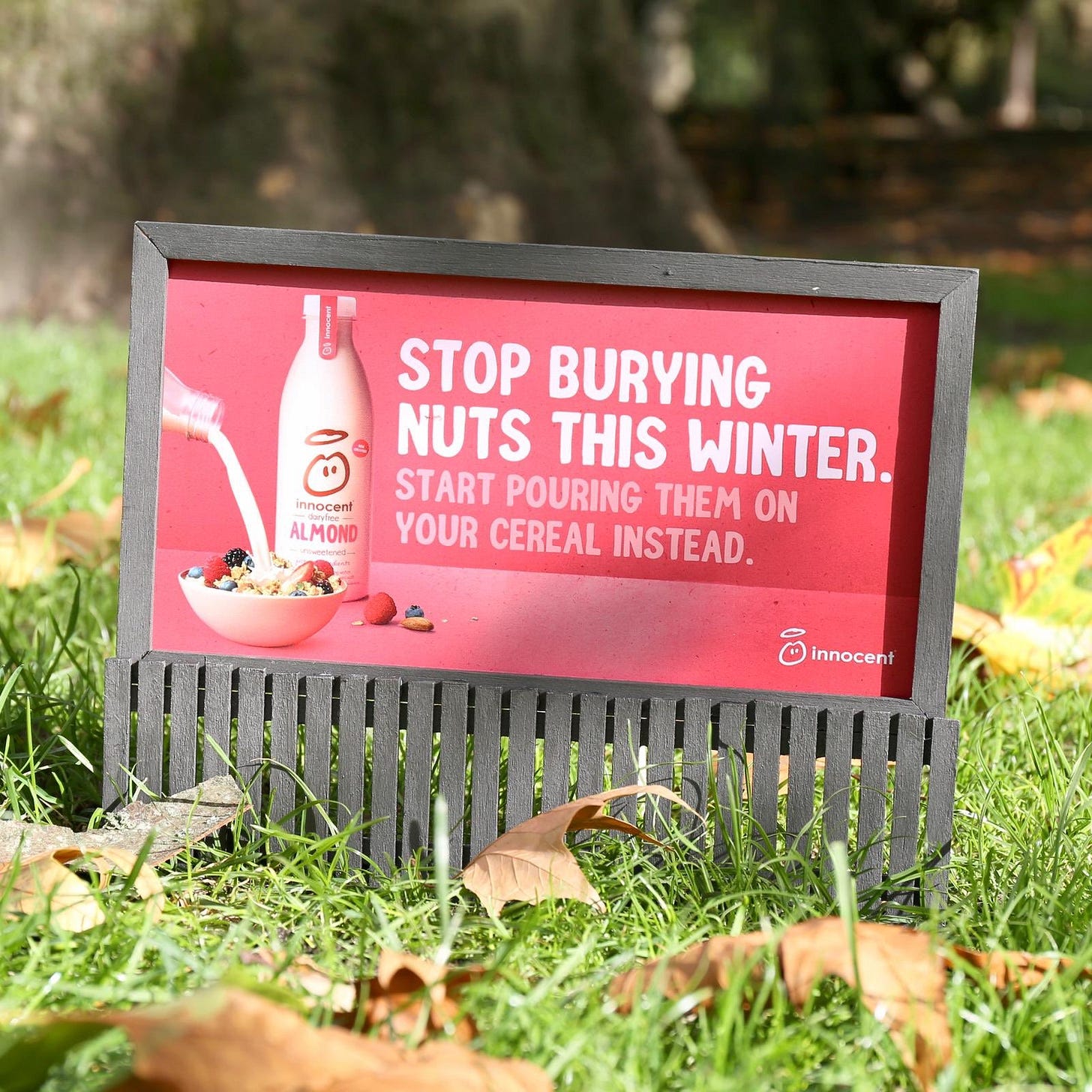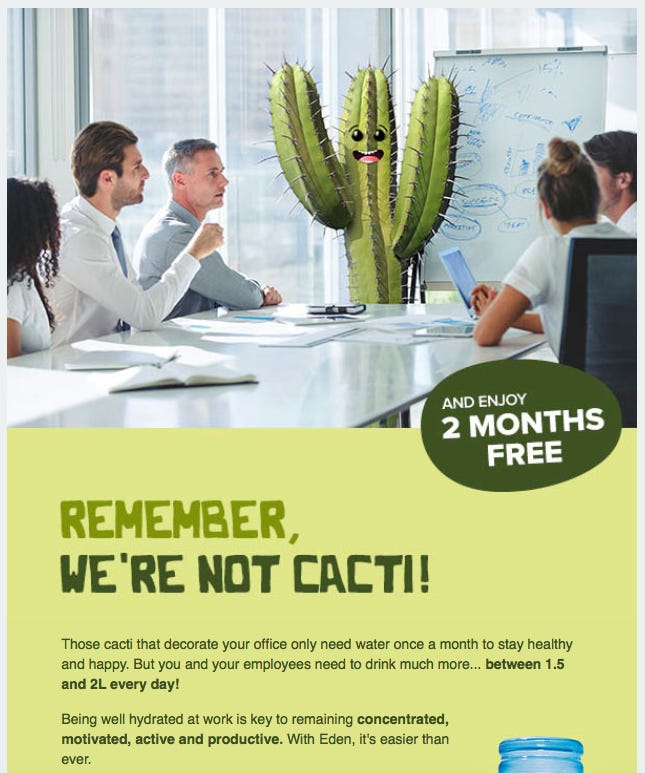The power of perspective
To give your copywriting a different dimension, try seeing things – and saying things – from a different point of view.
Imagine you had to sketch the room you’re in right now. You’d probably draw something like this:
In other words, you’d draw the room the way you saw it. Closer things are larger, while more distant things are smaller. The straight lines of floors, walls and ceilings get closer together, or converge, as they lead away from your eye.
It all feels completely natural. But it’s something you’ve learned – and there was a time when nobody knew how to do it at all.
For the ancient Egyptians, art wasn’t just a view of the world – it was a worldview. They depicted objects to reflect their importance or hierarchy, not their actual size or position.
It was many centuries before artists in China tried something different. For the first time ever, they tried to represent the way we actually see the world in their art.
At the time, nobody had ever seen anything like it. But for us, it’s obvious. We call it perspective: the art of representing 3D objects on a 2D surface.
Perspective gave the artist the power to show the viewer something real, yet somehow unreal. It opened up a new way of seeing.
If perspective in art lets you see something differently, perspective in copywriting lets you say something differently. Let me explain.
The basic way to write copy is as a one-on-one conversation between you and your reader. You usually get their attention with a benefit. Then you use your powers of persuasion to clinch the sale.
Now, there’s absolutely nothing wrong with that. In many situations, it might be enough. But it’s not very surprising. It stays within the frame of reference that the reader brings with them. It respects the unspoken contract of a normal conversation: to stay on topic, proceed logically, be relevant to the speakers and not suddenly flip out and start talking about something totally different. Basically, it plays it safe.
However, if you take a different view, you can do something much deeper and more powerful with your copy. You can show the reader something new, or put the product in a completely new light. You can turn your 2D idea into 3D.
Rev it up
To illustrate, here’s a print ad for Harley-Davidson with the headline removed. (If you already know it, try and pretend you don’t.)
Lots of ads show bikes and cars powering through a rugged landscape. So visually, this ad is fairly generic – you might even say banal. But it does a good job of expressing a feeling of power and freedom.
So, if you were a copywriter given this artwork, what headline would you write for it?
The 2D approach is to invite the reader to put themselves in the picture with a straight-ahead headline:
But what if we took a different perspective? To do that, we need to ask: what other people, or even things, might have a view on this product? And what might their thoughts, words or emotions be?
Now, these things don’t have to be realistic, or even real. We’re not making a documentary here. We’re looking for any way to be more original, thought-provoking or emotive.
Well, there’s a bike right there in the picture. Could we give it a will of its own? Make it less of a machine, more of a buddy?
Now the bike and its rider are partners, pushing back the frontier together. But what if we go further afield? Could the landscape itself speak, inviting bike and rider to explore it?
Notice how some deeper meanings are coming through. Now we’re suggesting getting back to something more authentic.
But we don’t have to be limited by what we see. Our perspective could be completely outside the frame, evoked by the copy alone. For example, something like ‘Daddy needs his me time’ would highlight the (resentful) perspective of the rider’s family, while ‘Accounts pending can stay pending’ would do something similar from the perspective of his co-workers.
Now let’s look at the actual headline that was used in this ad.

The line feels almost throwaway because it deals with something so incidental and physically insignificant. But bringing in the contrasting perspective of ‘peanut man’ allows you to say a whole lot more about ‘Harley man’. In fact, just about every word in this line is rich with meaning. Let’s break it down.
‘Somewhere’ contrasts the dislocation of flying with a sense of place, of being rooted in the earth.
Being ‘on an airplane’ means being shut in and confined – almost imprisoned. But Harley man’s world is broad and expansive, full of possibility. He’s born to be wild.
Peanut man is just a generic, abstract ‘man’. We can’t see him, and he has no identity, no reality. In contrast, Harley man is real, visible (in the picture) and fully present in the moment.
Because he’s on a plane, peanut man is a passenger, while Harley man is fully in control – of his bike and his destiny.
Peanut man is ‘trying to open’, implying that he’s physically puny, personally ineffectual and most likely impotent into the bargain. Harley man, meanwhile, is effortlessly handling the growling monster between his thighs. He doesn’t try. He does.
‘Small’ tells us that peanut man is a small guy, with small, petty concerns. But Harley man is a big guy on a big bike, riding through a big landscape under a big sky. And the size of his nutbag is not in doubt.
The ‘bag’, almost certainly plastic, contrasts the artificial, pre-packaged experience of flying with the physicality of riding through nature, signalling authenticity.
Finally, ‘peanuts’ is a metaphor for anything trivial, plus it’s vegan, so it’s pathetic by definition. Harley man has meaty concerns, and he never eats plants. Just raw, bleeding steaks from cattle killed with his bare hands.
Going deeper, who is peanut man? Where do I know him from? Why do I recognise his experience?
Because he’s me!
As a male reader of this ad, Peanut man is who I am now, while Harley man is who I could be, if I want it enough. Despite the huge distance and difference between us, I can become him just by dropping thirty large on a Harley. This adds a temporal shift in perspective, from ‘present me’ to ‘future me’ – poorer in cash terms, but immeasurably richer in masculinity.
All these ideas were present in the original image – subliminally, latently. But it’s only the change of perspective that brings them sharply into focus. The reader needs peanut man to fully appreciate Harley man.
Perspective in action
Let’s take a look at a few more examples of perspective copywriting in the real world.
In this ad for San Francisco university, the reader themselves takes a different temporal perspective – that of their future self. The copy invites them to reflect on the ramifications of their choices in the here-and-now, and how they might reverberate through time.
To highlight the reliability of Volkswagen cars, this classic ad invites the reader to take the perspective of someone who can’t do without their transport, even in the most extreme conditions.
On a slightly more sinister note, this old Bovril ad invites us to consider the perspective of animals who are soon to be ingredients:
Poor cows. Staying with animals but on a lighter note, this sign by the town council of Truro, Nova Scotia, speaks eloquently to humans by ostensibly speaking directly to deer:
Meanwhile, Innocent did a sign aimed at vegan squirrels – except it was really aimed at human vegans:
(I guess technically, all squirrels are vegans.) Bringing it back to humans, Prostate Research resurrected legendary comedian Bob Monkhouse to provide the sobering perspective of someone who has died from a disease the reader will want to avoid:
While the European Greens evoked the perspective of nature on environmental concerns with its line ‘Nature can’t vote – you can!’
It even works in B2B. This email from water-cooler providers Eden takes the perspective of co-workers, throwing in a surreal cactus for good measure.
And staying with plants, here’s top copywriter Chris Miller using the perspective of a privet hedge to show off, and sell, his skills:
How to do it
To apply the concept of perspective to your own copywriting, ask yourself who else could say or think something that relates to the product and the benefits that it offers.
Some ideas to consider are: friends, neighbours, parents, children, colleagues, animals, spirits, inanimate objects, historical figures, celebrities and fictional characters from literature or film. Basically, your goal is to move away from the product – in terms of time, place, culture, worldview or human relationships – to get a different perspective on it.
Once you’ve chosen someone, consider how their views or ideas could highlight a benefit of the product, either explicitly or implicitly. (Remember, intangible benefits can be just as powerful as tangible ones.)
What can they say, do or think that would throw new light on a vital aspect of the product? How does their experience chime or contrast with that of the reader? And what does that allow you to say or show that you couldn’t otherwise?
If you’re stuck for ideas, just pick something random and see where it leads. What would Gandalf say about the product, or Elizabeth I? What would a sausage or a carpet have to say? If an alien from the future encountered the product, what would they think? Even if your ideas aren’t usable as they are, they still might kick-start your creative process and take it in a new direction.
Anyway, I hope this post has given you a new perspective on your next copywriting job. Thanks for reading!


